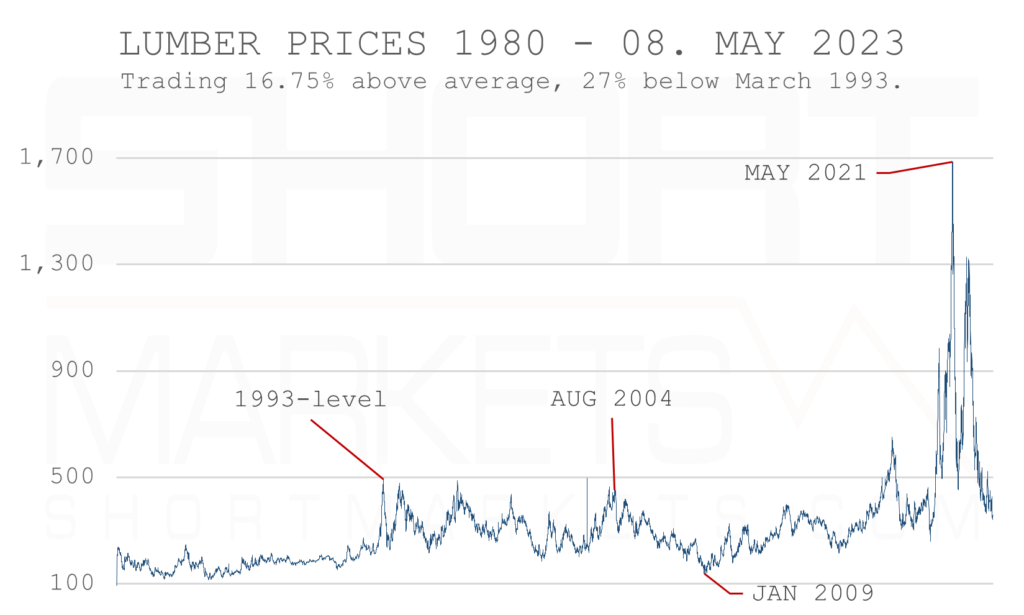Lumber prices have been the talk of the town in recent times. After reaching record highs in 2021 and with its second attempt in 2022, lumber prices have seen a significant drop, currently trading lower than it was in 1993.
Lumber is – 58% over the last year, and almost – 80% the last 2 years. Many are wondering why lumber prices have not kept up with the price surge experienced in other commodities such as oil, gas, softs, and metals. Why have not lumber prices followed the general commodity boom?

Oversupply: One of the major reasons for the current lumber prices is oversupply. After the 2008 financial crisis, many sawmills in the US and Canada had shut down, leading to a shortage of lumber. In recent years, however, there has been a significant increase in sawmill production capacity, resulting in a glut in supply, and putting downward pressure on prices.
Decrease in demand: Another factor contributing to the drop in lumber prices is a decrease in demand. The COVID-19 pandemic led to a surge in demand for lumber, as people were stuck at home and started DIY projects. However, this surge in demand was short-lived, and with the easing of restrictions, demand has decreased, putting further pressure on prices.
Tariffs: The US has imposed tariffs on Canadian lumber since 2017, which has increased the cost of imported lumber. This has led to an increase in the production of domestic lumber in the US, putting further pressure on prices.
Speculation: The surge in lumber prices in 2020 was largely driven by speculation. Many investors, looking for safe havens amid the pandemic, poured money into the lumber market, leading to a surge in prices. However, as the pandemic situation improved, investors moved their money elsewhere, leading to a drop in prices.
Lumber prices have not kept up with the commodity boom due to oversupply, decreased demand, tariffs, and speculation. While lumber prices may remain lower than 1993 levels for the time being, it is important to note that lumber is a cyclical market, and prices are likely to rebound in the future.
